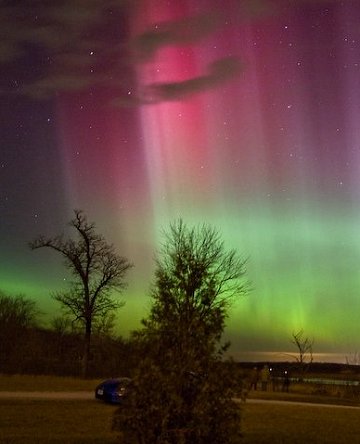Flares like this one are spawned by sunspots, which are dark, cool regions that cap magnetic activity below. When the caps pop, colossal doses of superheated matter and radiation are unleashed.
Sunspot 929 began kicking up flares Tuesday, when a major X-9 event was detected by a space-based observatory. When another flare erupted Wednesday, the NSO’s Optical Solar Patrol Network (OSPAN) was watching.
A shock wave propagated like the splash from a rock thrown into a pond. This was seen as a brightening from compressed and heated hydrogen gas. Astronomers enhanced the contrast of the images to bring out the detail, and they created an animation of the event.
Later, the shock wave swept across two dark filaments widely seprated on the solar surface, and they disappeared for a few minutes. Scientists are unsure whether the filaments were blown off or were compressed so they were temporarily invisible, according to an NSO statement.
Forecasters say there is a 40 percent chance of more major flares through this weekend. Skywatchers in Alaska, Canada and the very northernmost United States should be on the lookout for colorful Northern Lights generated by the space storminess.
The Sun will not be exactly aligned with Pluto and the Galactic Center until December 18 but was only four degrees away from that exact conjunction on December 14 when a coronal mass ejection hit the Earth, sparking the extreme electromagnetic storm. Spaceweather.com maintains an updated forecast on solar activity, which will be interesting to watch over the next few days.

